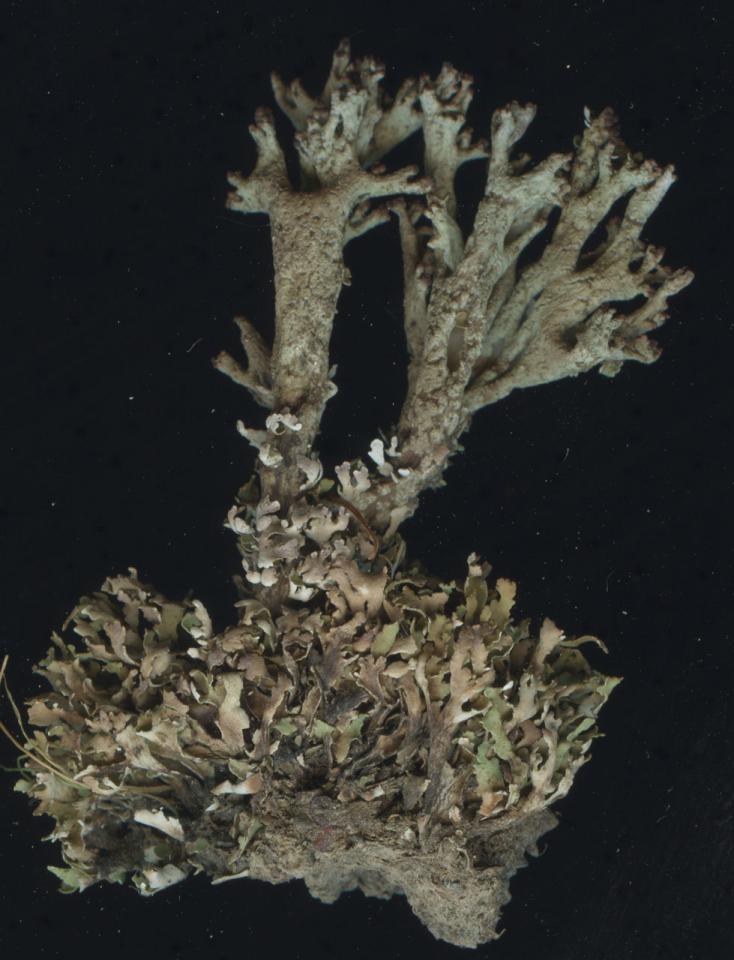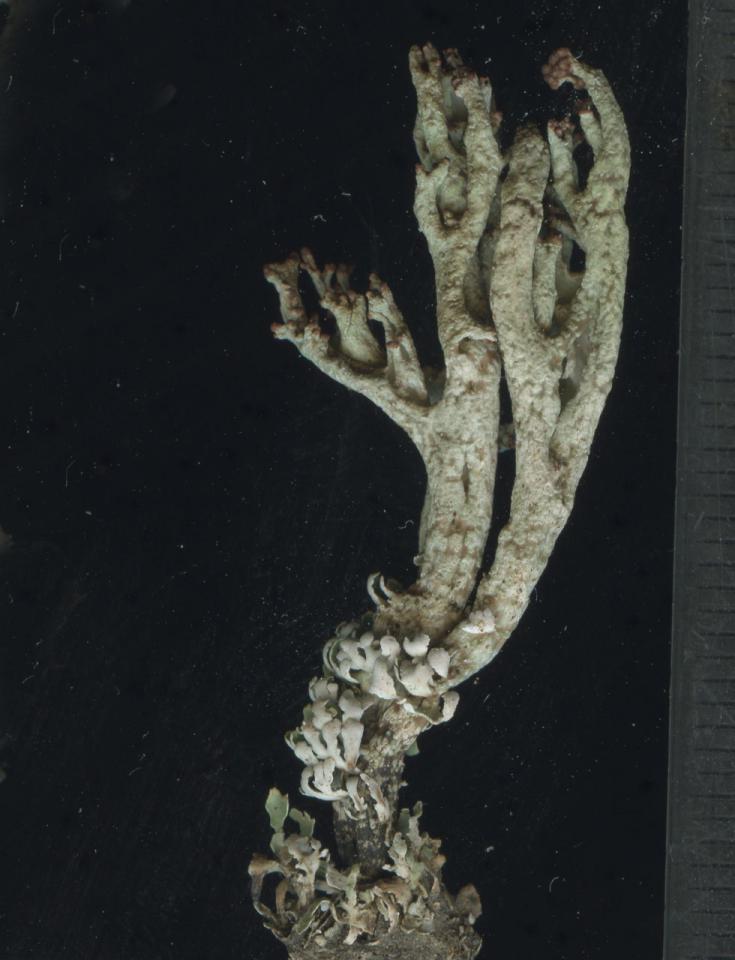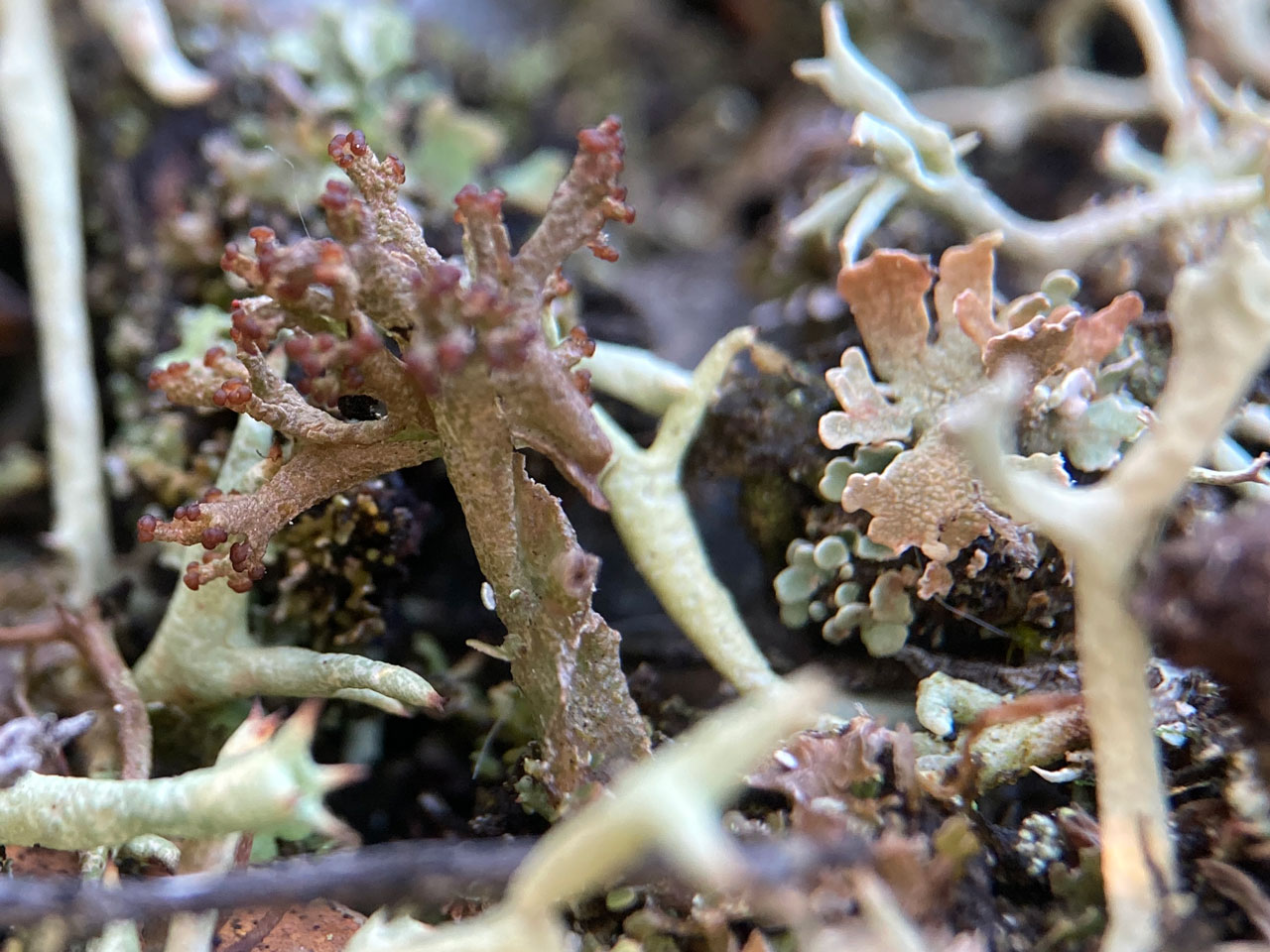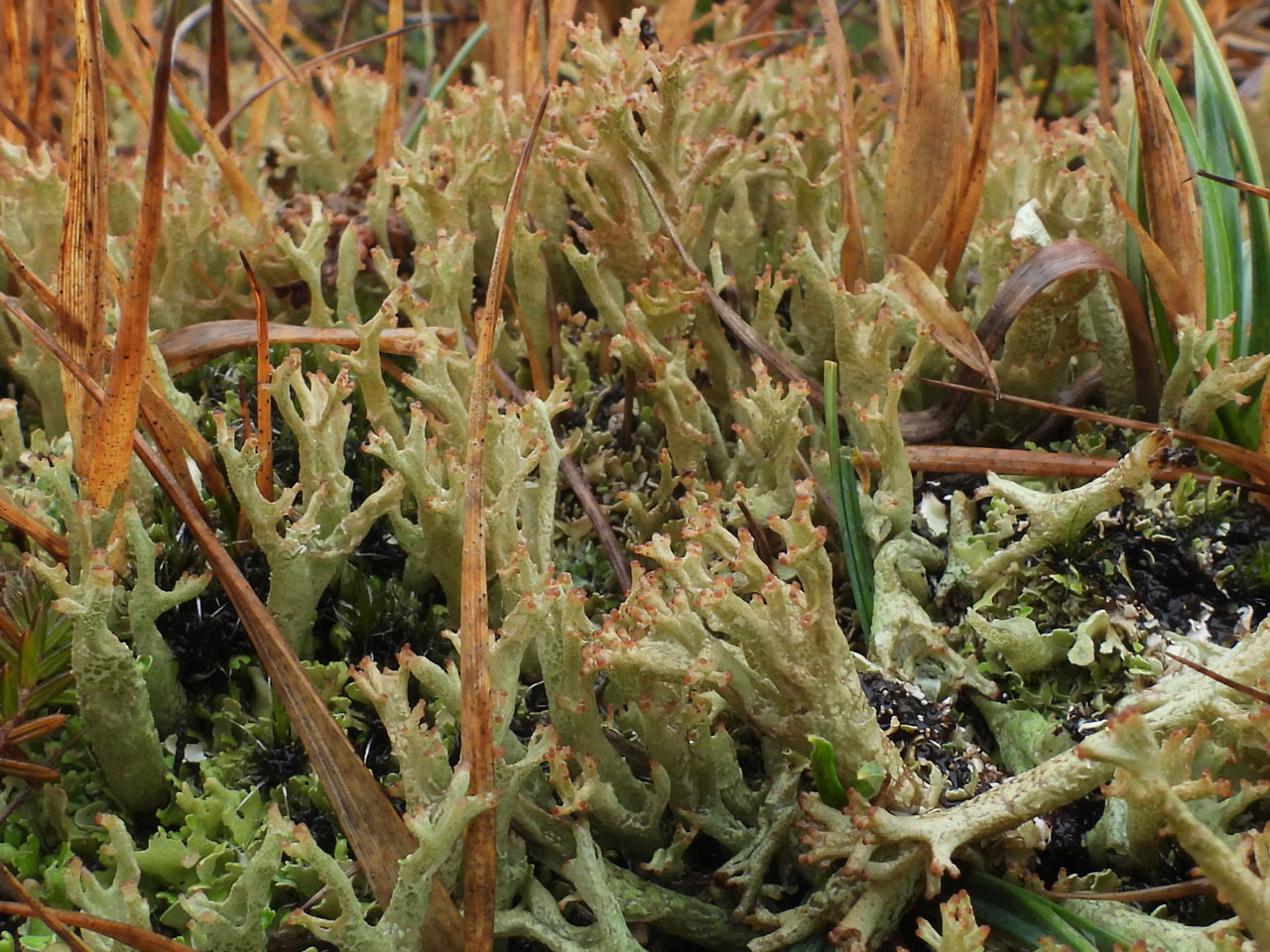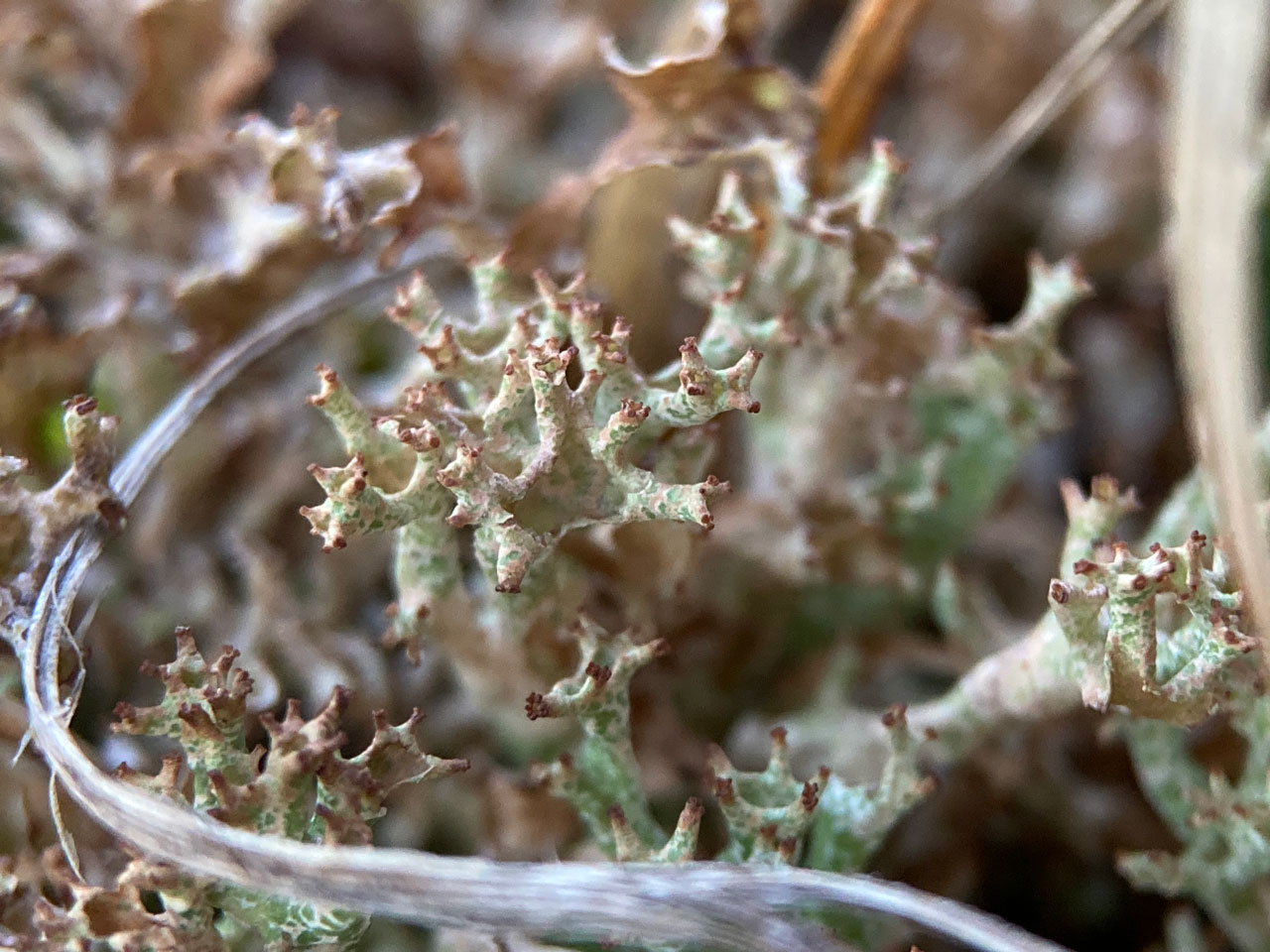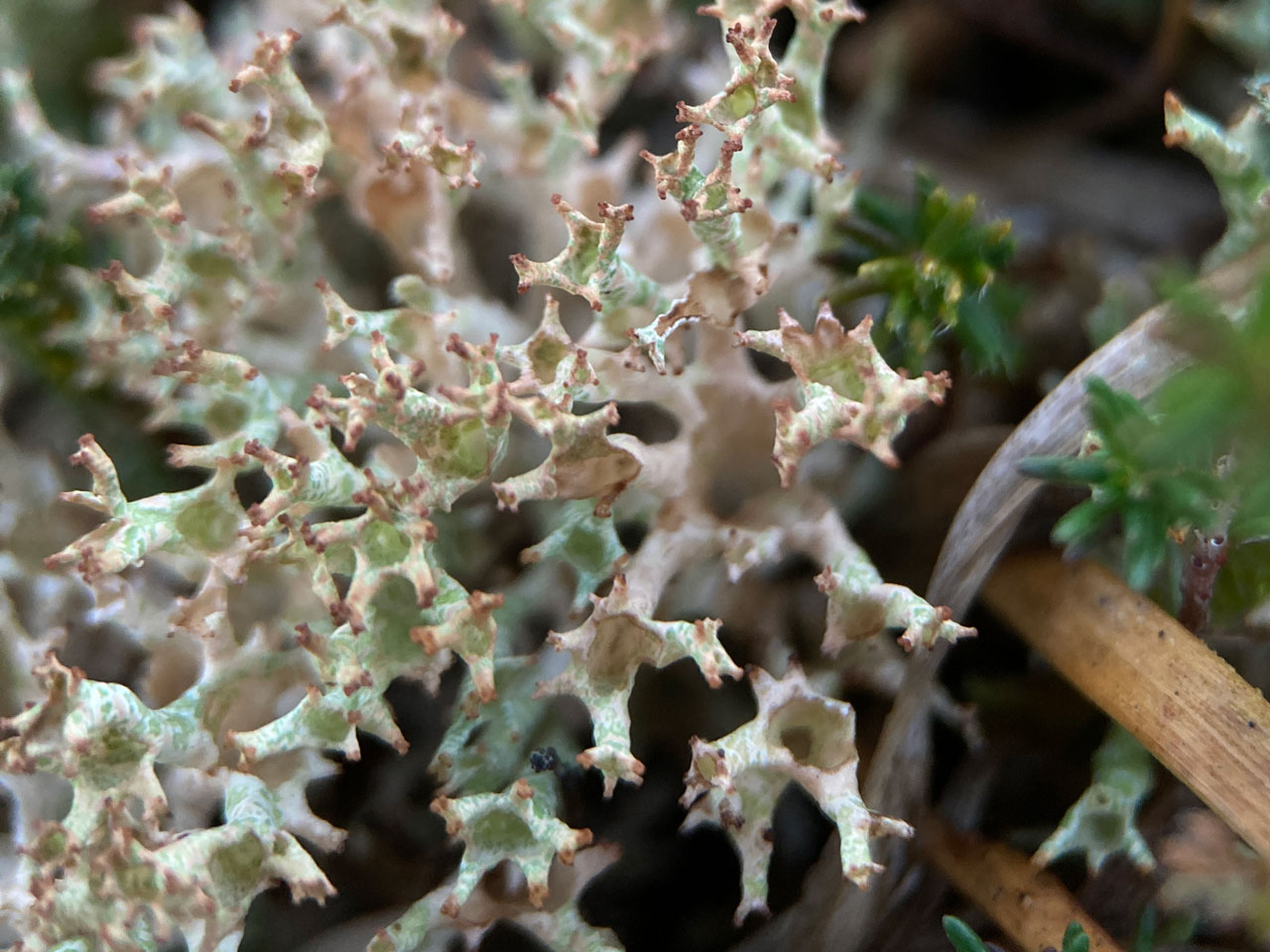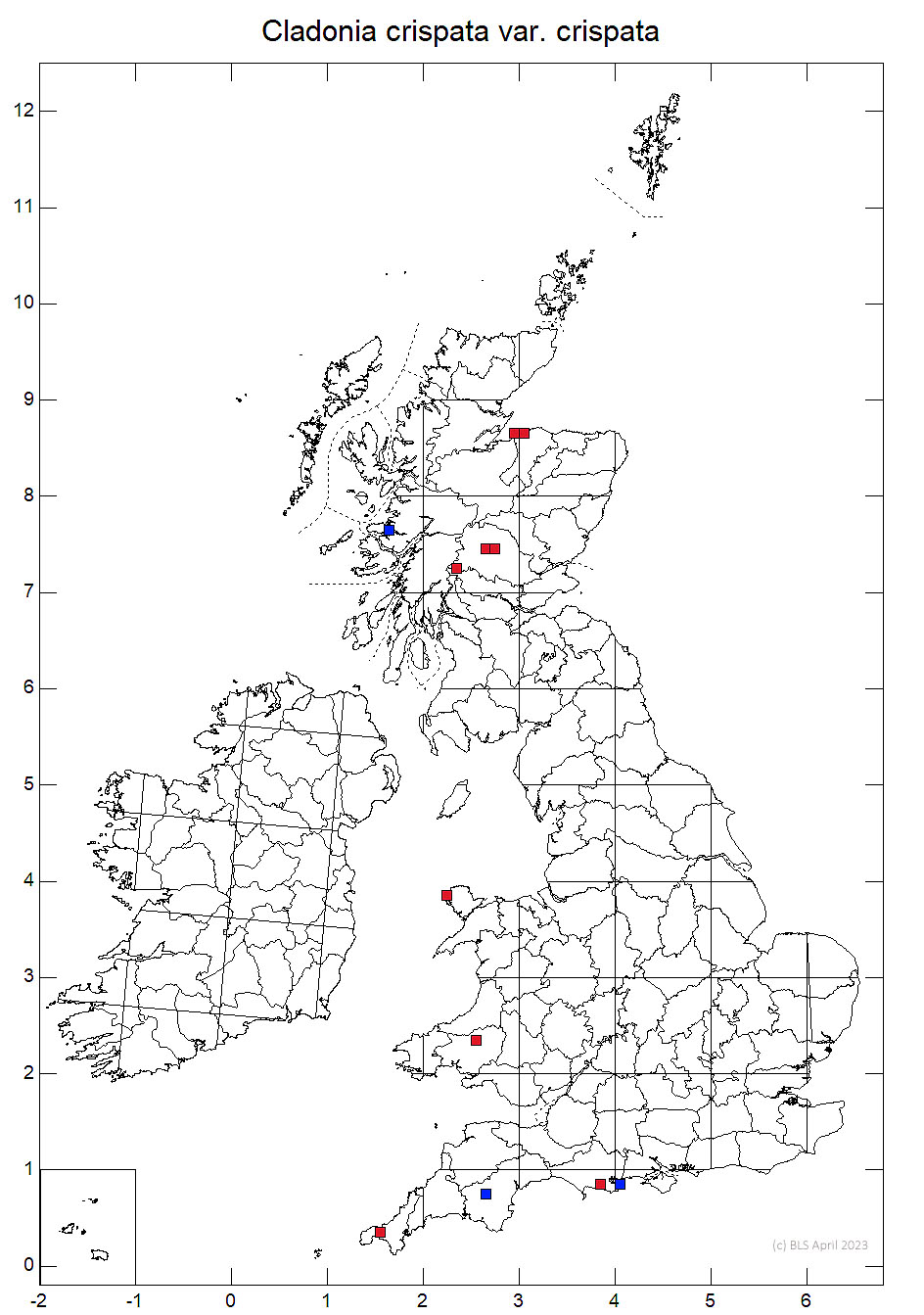Cladonia crispata var. crispata
An apparently rare taxon, which is probably a separate species from Cladonia crispata var. cetrariiformis. When well developed it is quite distinct from Cladonia crispata var. cetrariiformis in the sturdy podetia with well developed perorate cups with shorter, subulate proliferations, which can from tiers of podetia. Mainly found in coastal, grey dune systems, but rarely recorded inland in disturbed acid habitats.
Differs from the commoner Cladonia crispata var. cetrariiformis in having obvious, more well-developed, clearly perforated cups with shorter, subulate proliferations and tiers of more squat, sturdy podetia. Thallus C–, K–, KC–, Pd–, UV+ white (squamatic and ± barbatic acids).
Cladonia crispata var. cetrariiformis could be separable at species level, but the necessary combination has not been made to date.
Cladonia squamosa often has similar spot tests, but has more abundant squamules on the podetia, which typically peal off the podetia leaving decorticate areas.
Primarily in coastal, grey dune systems, also inland in mine sites, old gravel pits on forestry tracks and open damp heaths.

Very rare, England (Cornwall, Dorset, Yorkshire), Wales (Anglesey, Carmarthen), E. Scotland (Moray, Mid Perths.).
Appears rare but has not been evaluated.
Pino-Bodas, R., Sanderson, N., Cannon, P., Aptroot, A., Coppins, B., Orange, A. & Simkin, J. (2021). Lecanorales: Cladoniaceae, including the genera Cladonia, Pilophorus and Pycnothelia. Revisions of British and Irish Lichens 19: 1-45. Link
Text by Neil A Sanderson, based on Pino-Bodas et al (2021)
